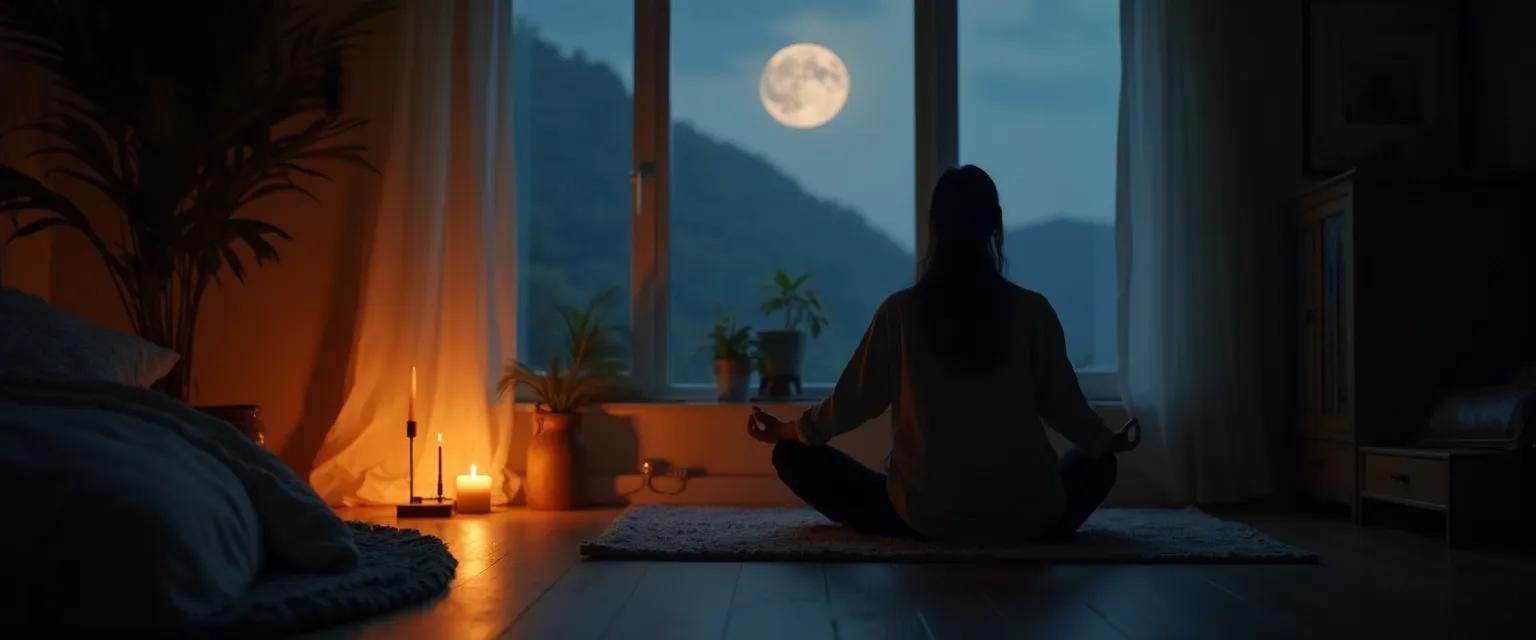Night Owl's Guide to Meditation and Sleep: Evening Practices That Work
Ever noticed how most meditation advice seems designed for those chirpy morning people? If you're a night owl who's tried—and failed—to embrace 5 AM meditation sessions, you're not alone. The good news? The connection between meditation and sleep doesn't have to involve dragging yourself out of bed at dawn. Science shows that evening meditation practices can be particularly powerful for night owls, potentially more effective than forcing yourself into an unnatural morning routine.
Your body has natural rhythms, and working with them—not against them—creates the strongest foundation for effective meditation and sleep improvement. Evening meditation practices cater specifically to your night owl tendencies, helping your busy mind transition from daytime activity to restful sleep. These techniques aren't just more sustainable for your lifestyle—they're designed to address the unique challenges that evening minds face when winding down.
Let's explore how to adapt meditation and sleep practices to work with your natural evening energy, rather than fighting against it. These approaches acknowledge your night owl nature while still delivering all the benefits that make meditation such a powerful tool for better sleep quality.
Quick Meditation and Sleep Techniques for the Evening Mind
Evening meditation requires different approaches than morning practices. Your mind has accumulated a day's worth of thoughts and experiences, making these evening-specific techniques particularly valuable for effective meditation and sleep improvement.
Breathing Techniques
The "4-7-8 Evening Breath" technique works wonders for night owls. Inhale quietly through your nose for 4 seconds, hold for 7 seconds, then exhale completely through your mouth for 8 seconds. This pattern activates your parasympathetic nervous system, telling your body it's safe to relax. Unlike energizing morning breathing practices, this technique specifically prepares your system for rest.
Body Relaxation
The "Descending Relaxation Scan" involves mentally traveling down your body from head to toe, releasing tension as you go. This practice is particularly effective for night owls because it addresses the physical tension that accumulates throughout the day. When practiced regularly, this stress reduction technique creates a powerful bridge between your active day and restful night.
Visualization
Rather than visualizing energizing scenarios (common in morning meditation), evening visualization involves mentally placing the day's concerns in a container and setting it aside until tomorrow. This "Thought Container" practice acknowledges your mind's tendency to replay the day's events while providing a structured way to release them, improving both meditation and sleep quality.
Creating Your Ideal Meditation and Sleep Environment
Your physical space plays a crucial role in effective meditation and sleep practices, especially for night owls who need stronger environmental cues to signal the transition to rest.
Physical Space Optimization
Create a designated evening meditation spot that's separate from your daytime activities. This doesn't require elaborate setup—simply a comfortable cushion or chair in a quiet corner works perfectly. This spatial separation helps your brain recognize the shift from productivity to relaxation, enhancing both your meditation and sleep experience.
Digital Boundaries
Implement a "Digital Sunset" 30-60 minutes before your meditation and sleep routine. This means no screens, notifications, or information intake. While challenging for many night owls who enjoy evening productivity, this boundary creates the mental space necessary for effective meditation and sleep improvement.
Sensory Elements
Engage your senses to deepen your practice. Dim lighting, light natural scents like lavender, and comfortable room temperature all signal to your body that it's time for rest. These sensory cues are particularly powerful for night owls whose bodies need stronger signals to transition from wakefulness to sleep preparation.
Integrating Meditation and Sleep into Your Night Owl Lifestyle
The key to sustainable practice is integration, not disruption. Start with just 5 minutes of evening meditation, gradually extending as it becomes part of your natural rhythm. Track improvements in your sleep quality using simple metrics like how quickly you fall asleep or how rested you feel the next day.
Adapt your practice to match your energy fluctuations—some evenings call for more active techniques, while others benefit from gentler approaches. This flexibility is what makes evening meditation and sleep practices particularly effective for night owls who may experience varying energy levels throughout the evening.
As you develop consistency with these evening-adapted techniques, you'll likely notice improvements beyond just better sleep. Many night owls report enhanced creativity, reduced evening anxiety, and a more peaceful relationship with their natural rhythms. By honoring your night owl nature while implementing these targeted meditation and sleep practices, you're creating a sustainable approach to working with your body's natural rhythm rather than fighting against it.




